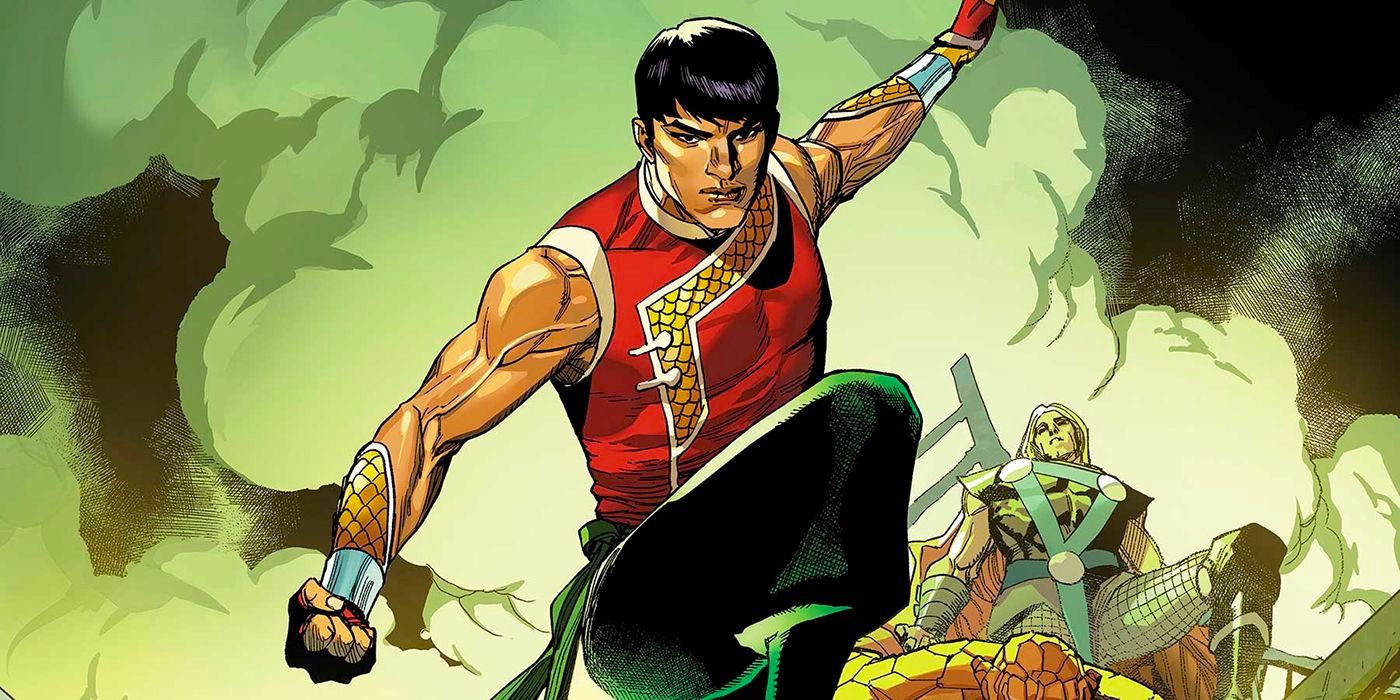Gene Luen Yang’s excellent character work is brought to life with electrifying art by Dike Ruan, making for a Shang-Chi book not to be missed.
Just in time for his arrival in the Marvel Cinematic Universe, Shang-Chi debuts with a new series by Gene Luen Yang, Dike Ruan and Triona Farrell. The plot follows up on Yang’s previous miniseries, with Shang-Chi in charge of his father’s criminal empire and reunited with long-lost family members. Raised to follow in his father’s footsteps, Shang-Chi now tries to use that criminal empire for good. The debut issue of the ongoing series feels like the beginning of a classic Jackie Chan action-comedy in the Marvel Universe.
Shang-Chi is trying to maintain a normal life, and go on a date with a nice woman, while his assassin sister, Esme, pesters him for permission to kill an informant who refuses to provide details on a drug ring. When Spider-Man, who was tracking the same criminal, drops in, Shang-Chi reluctantly agrees to a team-up, concerned other superheroes might discover his new role as the Supreme Commander of the Five Weapons Society. Spider-Man, Shang-Chi and Esme track their targets, which results in a disastrous confrontation and the revelation of a mysterious new criminal element in New York City.
While this first issue carries forward plot elements from Yang’s previous work on the character, the status quo is set up quickly with a humorous exchange that establishes the tension in Shang-Chi’s new role. The strained relationship with Esme provides a funny odd-couple dynamic that doubles as a reminder of the uphill battle the hero faces in controlling his inheritance. Yang uses Spider-Man to ramp up the humor and provide a dramatic foil.
Ruan’s art is energetic and expressive; his Shang-Chi is a fully realized character, with a youthful energy that elevates him beyond his shallow history as a no-nonsense fighter. The panel layouts and staging are dynamic, marked by extreme close-ups and low dramatic angles. The use of sweeping action lines sells the characters’ graceful movements. When the action heats up, panels burst out of a traditional grid and explode toward the reader.
Farrell’s rich colors set the mood of each scene. Relaxing moments are kept to dark blues and violets, but colors shift to a jarring orange when the action breaks out. Moments in which Shang-Chi feels the pull of the darkness he inherited take on an eerie green. Backgrounds are rich but diffused in hazy colors, echoing a camera’s tight depth of field, giving the issue a cinematic quality. Lanham’s letters are solid, clearly leading the eye across the page. His sound-effect work hews closely to Farrell’s colors and makes them a natural fit on the page.
This is a strong debut, and a good introduction to the character for those interested in the upcoming Marvel Studios film, starring Simu Liu. Under Yang, Shang-Chi is a charismatic lead who is playful, morally forthright and burdened by familial ties and responsibility. While the issue is a bit light on action, save for one major set-piece, readers get are dynamic fights that positions the hero as a force to be reckoned with. There is plenty of intrigue to hook readers, but, more importantly, Yang establishes an interesting cast of characters that readers will want to get to know more about. Brought to life by Ruan’s electrifying art, and the promise of more clashes with Marvel superheroes, Shang-Chi is a comic you won’t want to miss.
About The Author
